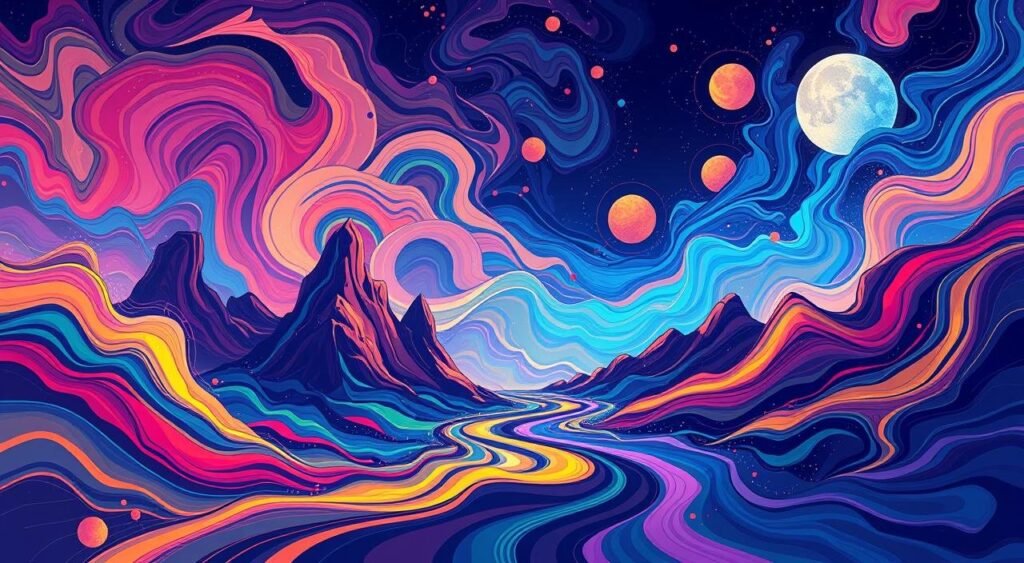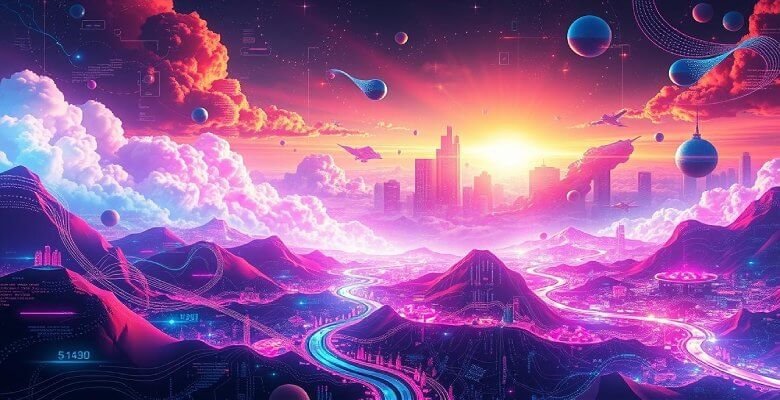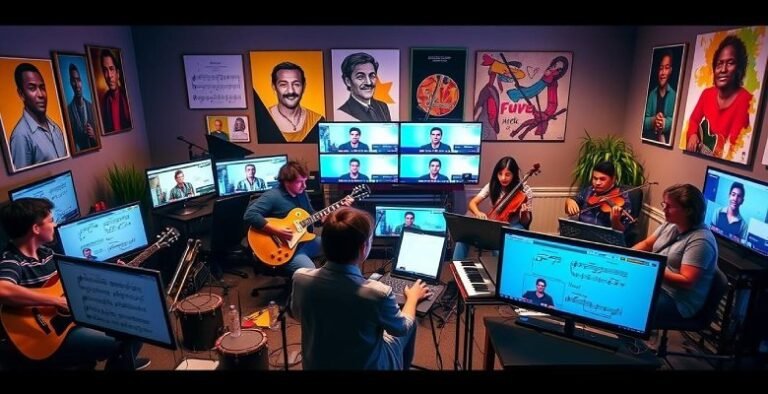The Rise of Digital Art in the Contemporary Era
Introduction The Rise of Digital Art in the Contemporary Era
Did you know digital art started in the 1980s, from early 1960s experiments? This began a new era where tech and creativity merged. You’ll see how concept art and digital art are now big, with artists exploring new ways to create.
Digital art has made art more accessible worldwide. It lets people enjoy art without seeing it in person. New tools and tech have also come up, letting artists show their work in new ways. From pictures and videos to augmented reality, the options are endless.
Key Takeaways
- Digital art has its roots in the 1960s, with the first forms emerging in the 1980s.
- Concept art and digital art have become increasingly popular, with many artists exploring new ways to express themselves.
- Digital art has democratized the art-viewing experience, enabling a global audience to engage with and appreciate artworks.
- The rise of digital art has led to the development of new tools and technologies, allowing artists to express themselves in innovative ways.
- Digital art and concept art have opened up new possibilities for artists, from illustrations and photography to GIFs, videos, and augmented reality.
- The blending of traditional artistic skills with proficiency in editing software and technological tools is essential for creating digital art.
The Evolution of Digital Art in Modern Times
Digital art has changed a lot from the 1950s. New technologies and tools have come out. This has let artists try new things and make interactive art.
Now, digital art lets artists do more than before. They can make three-dimensional graphics and more. This has opened up new ways to express creativity.
Big changes in digital art came with the graphic tablet and Adobe Photoshop. These tools have helped artists try new things. Digital art has also made it easier for artists to share their work online.

Artists like Laurie Anderson and John Cage have made big impacts. They’ve worked with engineers and scientists to create new art. Digital art has also led to new types of art, like digital photography and animation.
As digital art keeps growing, we’ll see even more new things. It will keep pushing the limits of what’s possible in art.
| Year | Event | Description |
|---|---|---|
| 1952 | Ben F. Laposky’s exhibition | Recognized as one of the first exhibitions of analog computer graphics |
| 1963 | Development of Sketchpad | Considered a precursor to modern CAD software and object-oriented programming |
| 1984 | Release of MacPaint and MacDraw | Precursors to later mainstream graphics software |
Understanding Digital Illustration and Concept Art
Digital illustration and concept art are key in the creative process. They help bring ideas to life. These skills are used in many areas, from comic books to big movies. Concept art sets the look and feel of visuals, creating characters, props, and settings from scripts.
In the visual development stage, artists use different methods to get ideas. They might start with simple sketches or silhouettes. They also use lots of reference images to get the details right. As the work grows, high-quality files are needed to add more details and make changes.
- 70% of projects need help with character and setting details
- 80% of artists say references are key for atmosphere
- 90% of concept artists use monochromatic thumbnails to brainstorm
Learning about digital illustration and concept art shows how artists use digital tools. It helps us appreciate the creative process and the new ways artists create.
Essential Tools and Techniques in Digital Art Creation
Exploring digital art means learning about tools and techniques. Illustrative techniques are key, and knowing them can make your art stand out. Adobe Photoshop is a top choice for digital art, with many features to help you create amazing pieces.
Graphic design is also vital for eye-catching art. Using graphic tablets and stylus pens can make your work detailed and precise. For example, the XPPen Artist 15.6 Pro tablet has 8 customizable keys and a red dial for better workflow.
Some important digital art techniques include:
- Cross-hatching: a method for shading and texture
- Color fill and gradient applications: add color and depth
- Texture and pattern assets: add visual depth to stories
By learning these techniques and using the right tools, you can make high-quality digital art. This art can engage and inspire people all over the world. Using illustrative techniques and graphic design can make your work visually stunning and effective.
| Software | Features |
|---|---|
| Adobe Photoshop | Wide range of features and tools for digital artwork |
| Clip Studio Paint | Library of community-created assets and shading assist function |
Professional Applications and Career Opportunities
Exploring digital art opens up many professional paths. Digital painting and concept art are key skills in the field. Artists use digital tools to create innovative work. In the U.S., an entry-level digital artist can earn about $57,758 a year.
There are many career options for digital artists:
- Graphic Designer: $47,072 / Year
- Motion Designer: $60,397 / Year
- Web Designer: $52,296 / Year
- Multimedia Designer: $55,013 / Year
- Video Game Designer: $66,501 / Year
These jobs need a solid base in digital painting and concept art. You also need to know software like Adobe Creative Suite well.
With more experience, digital artists can make more money. Some jobs can pay over $75,623 a year. Focusing on 3D modeling and animation can also boost your earnings. Whether you love digital painting or concept art, there are many great jobs in digital art.
Improving your skills in digital painting and concept art can lead to new career paths. With the right training and experience, you can become a successful digital artist. This career is rewarding and creative.
| Job Title | Average Salary |
|---|---|
| 2D Animator | $50,505 / Year |
| 3D Animator | $53,643 / Year |
| Art Director | $70,291 / Year |
Conclusion: The Future Landscape of Digital Artistry
The future of digital art is exciting and changing fast. Now, people all over the world can see and enjoy art without going to a gallery. New technologies like NFTs let artists share, sell, and own their work in new ways.
The digital art market is expected to hit $3 billion by 2023. This shows how much people love and value digital art. Today, more than 80% of artists use digital tools, making it a flexible and affordable choice. Virtual reality and AI are also changing how we see and interact with digital art, making it more immersive.
As digital art keeps growing, it’s key to stay up-to-date and grab the new chances it offers. By keeping an eye on trends and innovations, you can make the most of this exciting field. The future of digital art is full of possibilities, and you get to help shape it.



